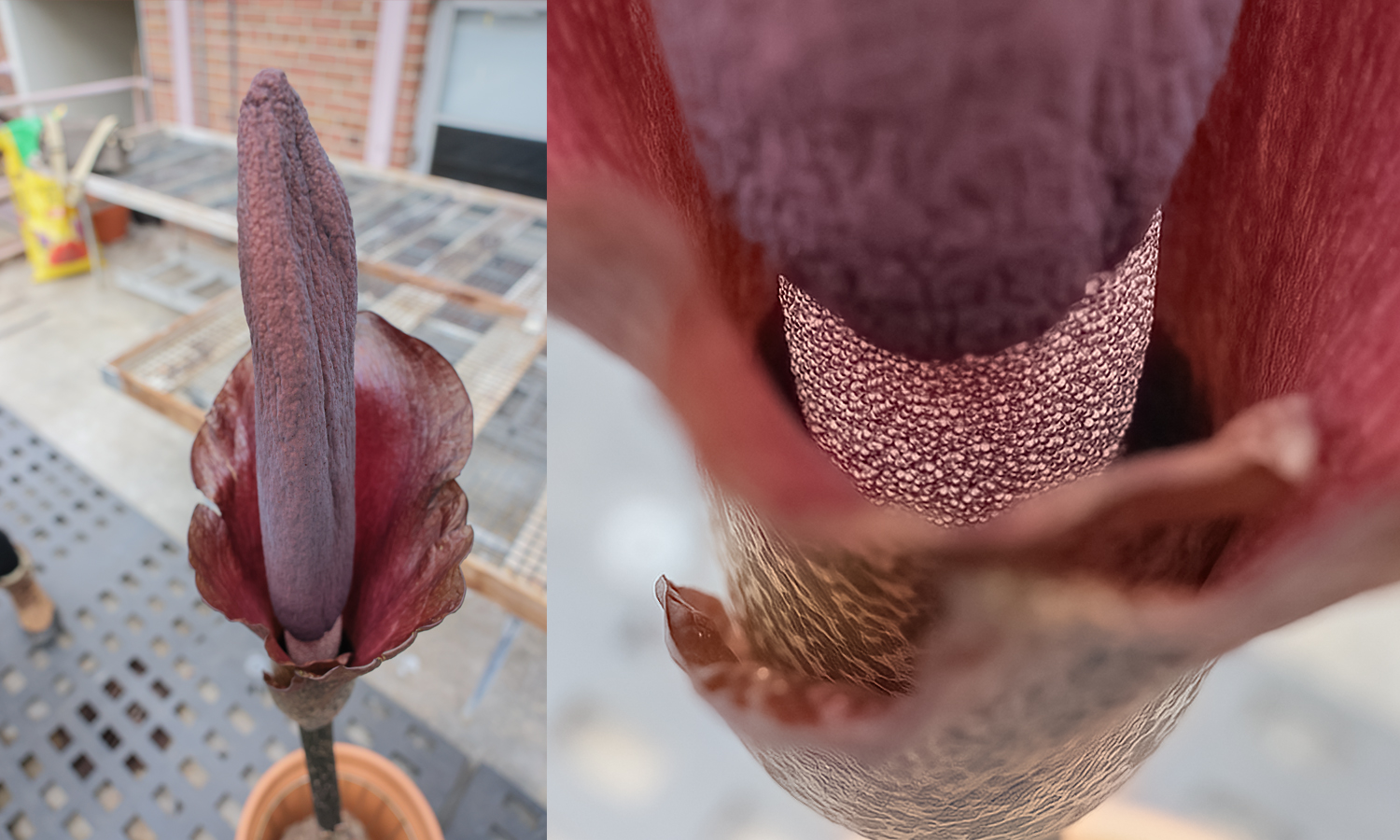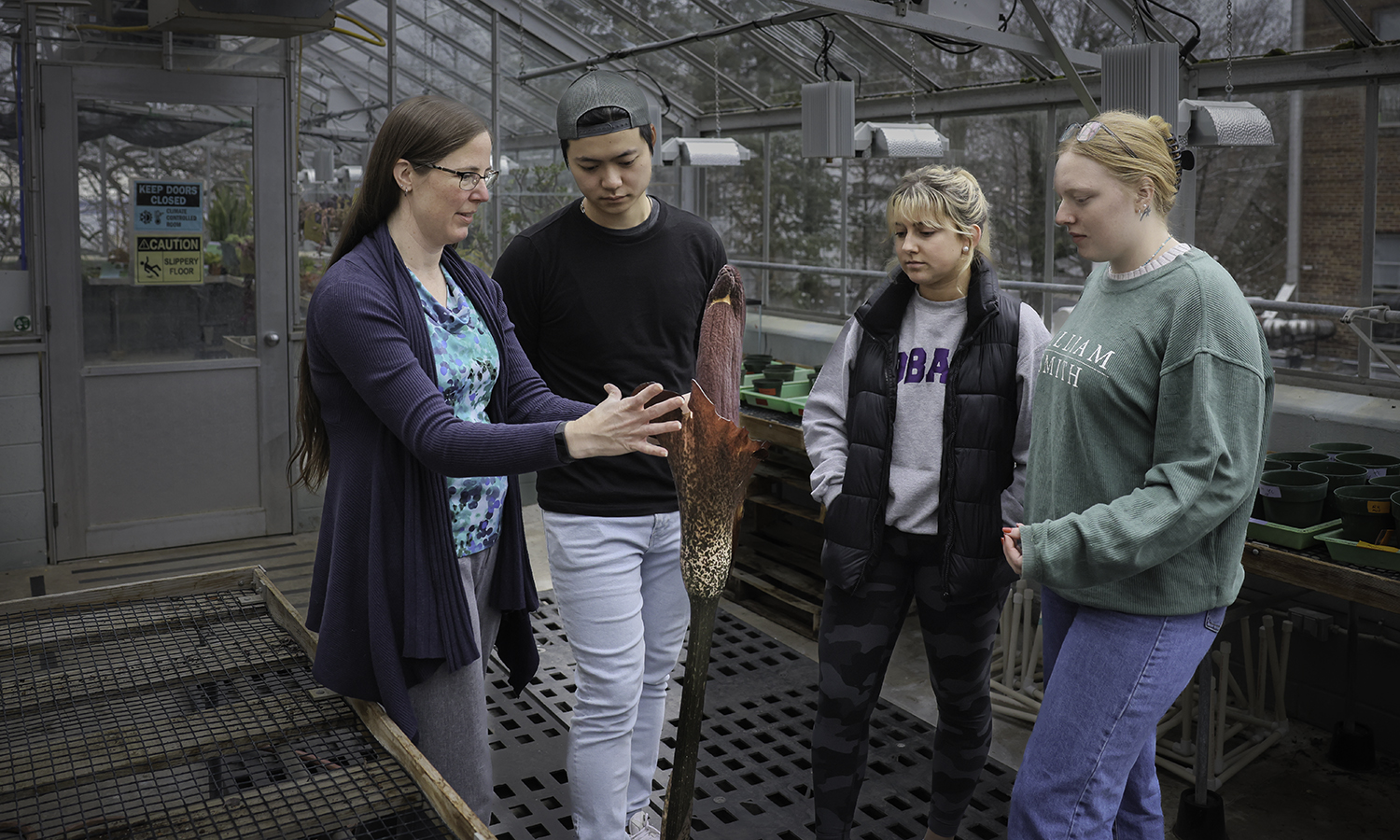
HWS News
23 February 2023 Devil’s Tongue Flower Blooms in the HWS Greenhouse
A unique flower is blooming on campus.
A devil’s tongue plant, also known as Amorphophallus konjac or the voodoo lily, is in bloom in the HWS Greenhouse and will be in bloom for the next four days. The HWS community is invited to observe the flower on Friday from 8:30 a.m. - 5 p.m. Saturday, visiting hours are 10 a.m. - 4 p.m. Associate Professor of Biology Shannon Straub will be at the greenhouse on Friday from 11:30 - 12:30 p.m. to answer questions.
The greenhouse is located on the second floor of Eaton Hall.

Cameron Guan ’23, Sabrina Weldon ’23 and MaryBridget Horvath ’24 observe a devil’s tongue plant in bloom with Associate Professor of Biology Shannon Straub.
“About a week ago, Brian and John noticed the plant starting to poke through a box in their basement and thought we might like to host it in the greenhouse on campus. They thought the students and broader campus community would be interested in it,” Straub says.
Clark and Knouse also have a very good reason for wanting the flower out of their house while it’s in bloom, Straub explains. “These plants attract pollinators, such as carrion beetles, by producing a smell like rotting flesh,” and it is “definitely stinky,” Straub says.
The flower went into bloom on the morning of Feb. 23. Now at full-size inflorescence, the devil’s tongue plant is over 4 feet tall.
Native to Asia, the plant has likely gone through several years of producing one leaf per year and storing energy in the corm (swollen underground plant stem that serves as a food-storage structure to help plants reproduce and/or survive adverse conditions) to prepare for flowering. Straub says the only care the plant has needed in the HWS Greenhouse is access to sunlight.
Students majoring in biology are having fun with the temporary addition to the HWS Greenhouse. They ran a contest to name the plant, deciding on "Wednesday," after the title character in the popular Netflix drama.
In the photo above, students in "Genomics" with Associate Professor of Biology Shannon Straub observe the devil's tongue plant.



